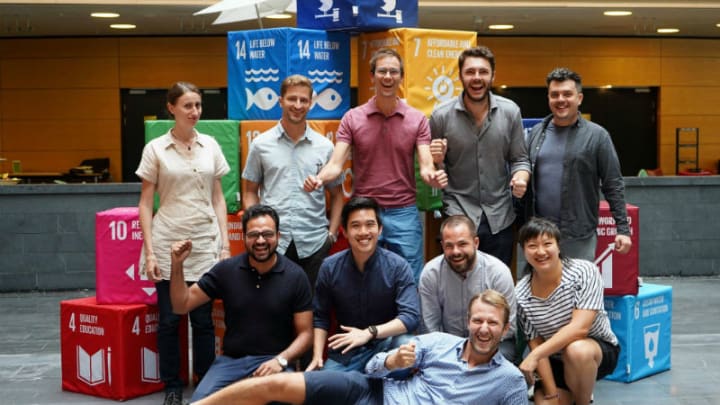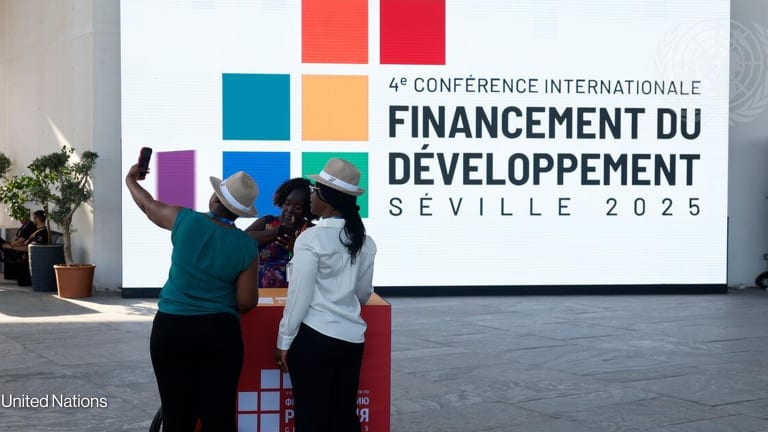
SAN FRANCISCO — This week, more than 1,000 young professionals are gathering in Shenzhen, China, to work on solutions for the Sustainable Development Goals.
In teams, they will work through an innovation process designed by the global innovation lab UNLEASH before pitching their ideas to experts, mentors, and investors. This year, they will focus on areas including health, education, climate, clean water and sanitation, industry and infrastructure, and sustainable cities and communities. UNLEASH was conceived as a platform for new ideas to unfold rather than an accelerator of existing ideas, but in the past, many of the ideas developed over the course of the week started and ended in the host city.
“If you think about one month, one hot dog stand, the next month, another hot dog stand, you have an issue. Think about McDonald’s. You need a system. And you roll it out.”
— Henrik Skovby, executive director, UNLEASHThree years in, the UNLEASH team saw the need to revisit some of the most promising solutions that emerged from the 2017 event in Denmark and the 2018 event in Singapore and launched a new program called UNLEASH+.
“After two years, UNLEASH recognized the continued gap between developing innovative solutions and creating a sustainable business plan with the necessary support or funding to drive it forward and make real change,” said Jamey Butcher, executive vice president of Chemonics, the implementing partner for UNLEASH+.
With a growing number of efforts to support ideas for the SDGs and only a decade left to achieve these goals, UNLEASH+ could serve as a model for ways to ensure that pitches and prototypes have a path to impact at scale, according to Henrik Skovby, executive director at UNLEASH.
Skovby said he came up with the idea and put the partners in place to make it happen to address what he saw as a lack of solutions for the SDGs that would be attractive to the private sector.
“Given the amount of funding that exists out there in the private sector looking for returns, the fact that we can’t find solutions with a small return but huge impact means our solutions are not good enough,” he said.
Skovby and his team organize the annual event as well as an online platform where UNLEASH talents can tap into a global community, but he said there was still a need for “more hand-holding.”
“We developed the UNLEASH+ track to formalize that journey from having an idea and forming teams and creating alliances to creating more robust business projects,” Skovby said.
For the past six months, 25 teams of two to four members with at least one previous UNLEASH talent have gone through an acceleration program to prototype and test their solutions for the SDGs. This week, UNLEASH+ participants are attending a one-week boot camp, developing their financial models, and validating their go-to-market strategies. Finally, they will pitch to a panel of funders in Shenzhen who have committed to providing a minimum of $10,000 to winning teams, and UNLEASH will connect participants with longer-term incubator and accelerator partners so they can build on their minimum viable product.
Angela Chen, an entrepreneur who previously worked at an impact investing advisory firm focused on emerging markets, traveled from Canada to Singapore for UNLEASH 2018. Her team worked on a take-back scheme for single-use plastic sachets in the Philippines.
A few months later, she met another UNLEASH 2018 talent at an incubator in Singapore. Together, they founded Eskwelabs, an education-technology platform for digital skills in Southeast Asia, to prepare young people for the future of work.
“As we get closer and closer to 2030, it's more and more important that we not only create more ideas, but execute on them with urgency,” she told Devex via email.
Whereas UNLEASH teams may be more product-focused, UNLEASH+ teams are focused on business models.
“If you think about one month, one hot dog stand, the next month, another hot dog stand, you have an issue,” Skovby said. “Think about McDonald’s. You need a system. And you roll it out.”
He mentioned, for example, how this model might apply to members of an UNLEASH+ team working on light-infrastructure hospitals in rural areas, saying they need to think, not site by site but in terms of thousands.
Gregory Pepper, who leads UNLEASH+, said the curriculum emphasizes human-centered design, an approach that involves users in each step of the process.
“It is equally important that the teams clearly understand how to measure and articulate the impact they are creating,” he said.
For both UNLEASH and UNLEASH+, it is critical to back the individuals and teams with the most potential, given how much the programs invest in them.
“It’s an experiment,” Skovby acknowledged. “And it is an expensive experiment.”
As the lead scale partner for UNLEASH, Chemonics is connecting UNLEASH+ teams with its own network of international development experts as well as others who can provide feedback on how to implement and scale these ideas.
“We are setting an audacious goal of applying the same discipline, access to finance, and enablement found in places like Silicon Valley to the innovators of solutions for low-resource settings,” Chemonics’ Butcher said.
He said he sees the decision to launch UNLEASH+ as a testament to the fact that generating solutions is not enough to make a difference for the SDGs.
“Bringing people together to create, innovate, and work on these complex problems is only one part of the equation,” he said. “We need to also ensure there are effective, accessible, and inclusive support mechanisms and funding when those solutions evolve.”




